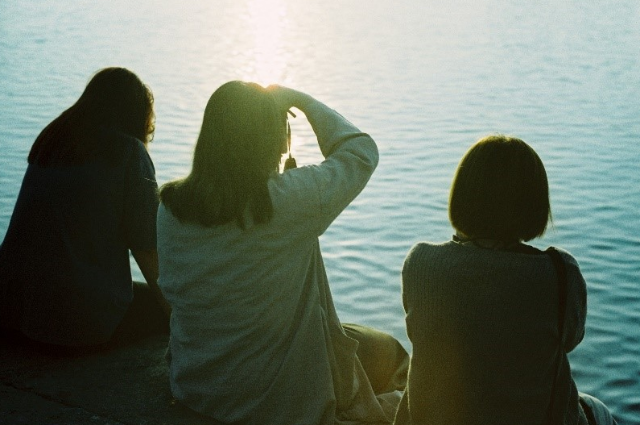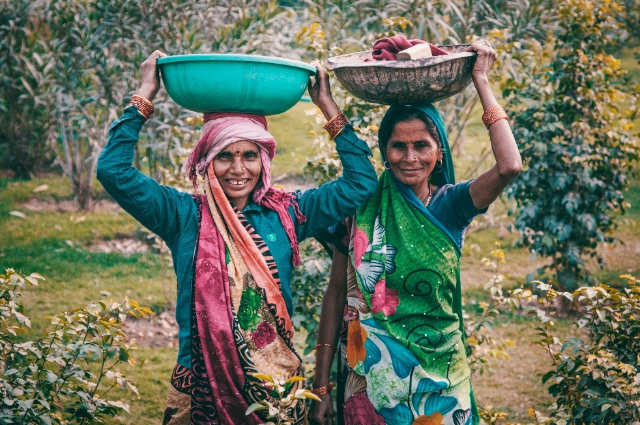
Introduction:
Position and function of women is a debating issue for centuries. Since ancient to the present, women folk had gone through various faces of the society. Either in the best way or at the worst. Changing phases towards the girls down the ages is an essential study to be done, as they are the keystone inside the Indian society.
Women in Ancient India:
While comparing to other ages women in ancient India enjoyed a colourful age. Marriage was considered a holy bond instead of a contract. Women held a better position in the family. They were allowed to enjoy life. Education was an important qualification for marriage. The most pleasing feature of this period was the number of women teachers, especially qualified in spiritual knowledge. Literary evidence shows that girls of high families and those lifting hermit ages had studied ancient texts and legends. Royal girls got training in arts too. Girls whose fathers doesn't take a step forward were allowed to marry on their own choice after waiting for three years. A husband has to go through several penalties if he mistreats his wife, but in the case of a wife, she has to only perform penance. Even though the dowry system was unknown, gifts from the part of the bride’s family were accepted. The system of diversity has not existed. Widow remarriage was encouraged in certain cases. Sati was not popular during the period.
Vedic period was an era of historic development and human civilization. Women were respected and allowed for rituals with their husbands. His spiritual life was incomplete without her. Gradually there was a transmission from a matriarchal to a patriarchal form of society. Increased participation of priests in religious rituals and male dominance reduced the position of women in the family. They were limited to sacrifices and slowly confined to the four walls of the house. Educating girls which was an accepted norm in the Vedic society began to be neglected and later any access to education was denied. Discouraging of widow remarriages increased the number of childless widows. Women played a vital role in purity protection. To protect racial purity child marriage was also encouraged.
Women in Medieval India:
Medieval period begins with the invasion of Muslim rulers. It was a period of 500 years from the era of the Delhi sultanate to the Mughal. Medieval period was completely different from that of the ancient. All the freedom that ancient women had enjoyed was denied. They were not allowed to participate in public functions as that of men. They were restricted from social movements and were supposed to stay at home. Even though movements such as the Bhakti movement opened a new platform for women. This gave rise to a new class of men and women. Many took active participation in politics like Razia Sultana. Child marriage was one of the evil practices of this period. Instead of giving at least primary education, they were married off at early ages. ‘sati' was another social evil encouraged by the society which means self-immolation of women. 'Devadasi' system was common among Hindus which means women were the wives of gods. But they were compelled to entertain priests’ kings and even members of upper classes. Widow remarriage was discouraged during the period. Condition of Hindu widows was worst compared to Muslims, they were secluded and kept away from all worldly pleasures. Instead Muslim widows could remarry after a required time period from the death of her husband. Pardah system and practice of Jauhar for the family of dead soldiers were also prevalent. Dowry system acquired its at most position in both among Hindus and Muslims. This had become a threat to the poor. Thus, female infanticide and foeticide became common. Giving education to girls was seen as a waste of money. The reason for this was they will not get proper training in household work if they go to school. So, parents saved it for the marriages of their daughters. With no access to education, women of this period became an exploited class.
Women in Colonial India:
Women's condition in the colonial period was almost equal to that of medieval period. Social evils such as child marriage forced marriage shaadi devadasi for the system dowry system female foeticide etc existed. They were under the dominance of men. Literacy rate of women wears very low as they didn't get access to higher education. Female workers were subjected to lower pare as compared to males. Domestic slavery was also prevalent during the period. Women wear not allowed to inherit the property of their forefathers. Britishers realised that Indian women are less civilized compared to that of Europeans. does some of the social reformers along with some British administrators made great efforts against those social evils and brought a balancing position for women. Sati was abolished and the widow remarriage act was passed. Christian missionaries started education for girls and girls' schools were opened. Polygamy system was made illegal, except for Muslims and some Hindus.
Women's movements for freedom played a significant role in colonial India. Gandhi led civil disobedience and quit India movements brought women out of their houses and made them actively participate in public. Even though during the time of partition thousands of women were kidnapped and many of them had committed suicide Muslim women were subjected to nude processions and rape by Hindu mobs. In Amritsar, Sikhs made Muslim women naked parade and publicly raped. Better women were even shared with the police and the army. As a revenge Muslims had wiped off two or three Sikh villages and the situation had become worse. Later independence and a stabilized form of government brought back a slightly peaceful atmosphere to the women folk.
Women in Modern India:
Indian women gained considerable importance after independence. Compared to the past, they are in a respectable position at present. Social evils such as child marriage and Sati which were hounding Indian women for centuries come to an end. Sati was abolished in 1829. Widow remarriage act was passed. Large-scale participation of women in national movements had removed the purdah system without any measures. Reform movements of the 19th and 20th centuries resulted in improvements in the condition of women. Society which has neglected womenfolk for centuries has started to give them equal opportunities in public. Modern women set off to the battlefield of life, armoured with their talents. This doesn't mean they are free from problems. Some of the major problems facing by women in Modern India are:
- Lack of education
- Lack of power
- Poor health and malnutrition
- Maternal mortality
- Mistreatment
- Overwork
- Dowry
- Female infanticide or foeticide
- Crimes against women
- Trafficking

Women in Present India:
In this era of the 21st century, women had still not owned a constant position. Living in the same country, with the same society and culture, they are still tortured by men. They are bearing domestic violence, getting harassed and raped. Female infanticide still exists. Women folk, from children to the old were getting assaulted day by day. There are several laws and human rights against this, but this doesn’t result much. UNICEF recently concluded that "the alarming decline in child sex ratio is likely to result in more girls being married at a younger age, more girls dropping out of education, increased mortality as a result of an early child-bearing and associated increase in the acts of violence against the women." Due to its worse practices and poor mindset, India is partially paralysed. Experts predict that rising crimes and violence against women are a threat to the stability and security of the nation.
Conclusion:
Status of women in India had changed a lot down the ages. From the highly respected ancient period to assaulting the present time. Even though the condition of women is much better and they are getting equal opportunities to that of men, still there are issues like inequality, harassment, dowry, property issues, etc. Thus, women's empowerment is a crucial factor in this developing India. Women and men both are equally important in society as they are like both sides of a coin. Thus, mutual and smooth movement is essential for the prosperity of the nation.
